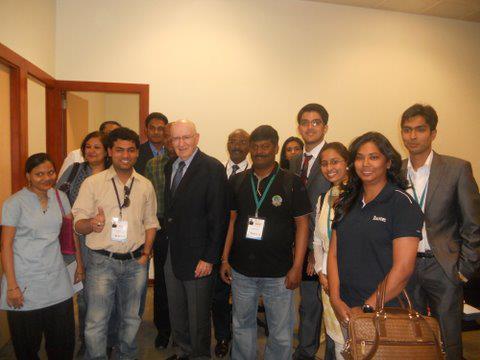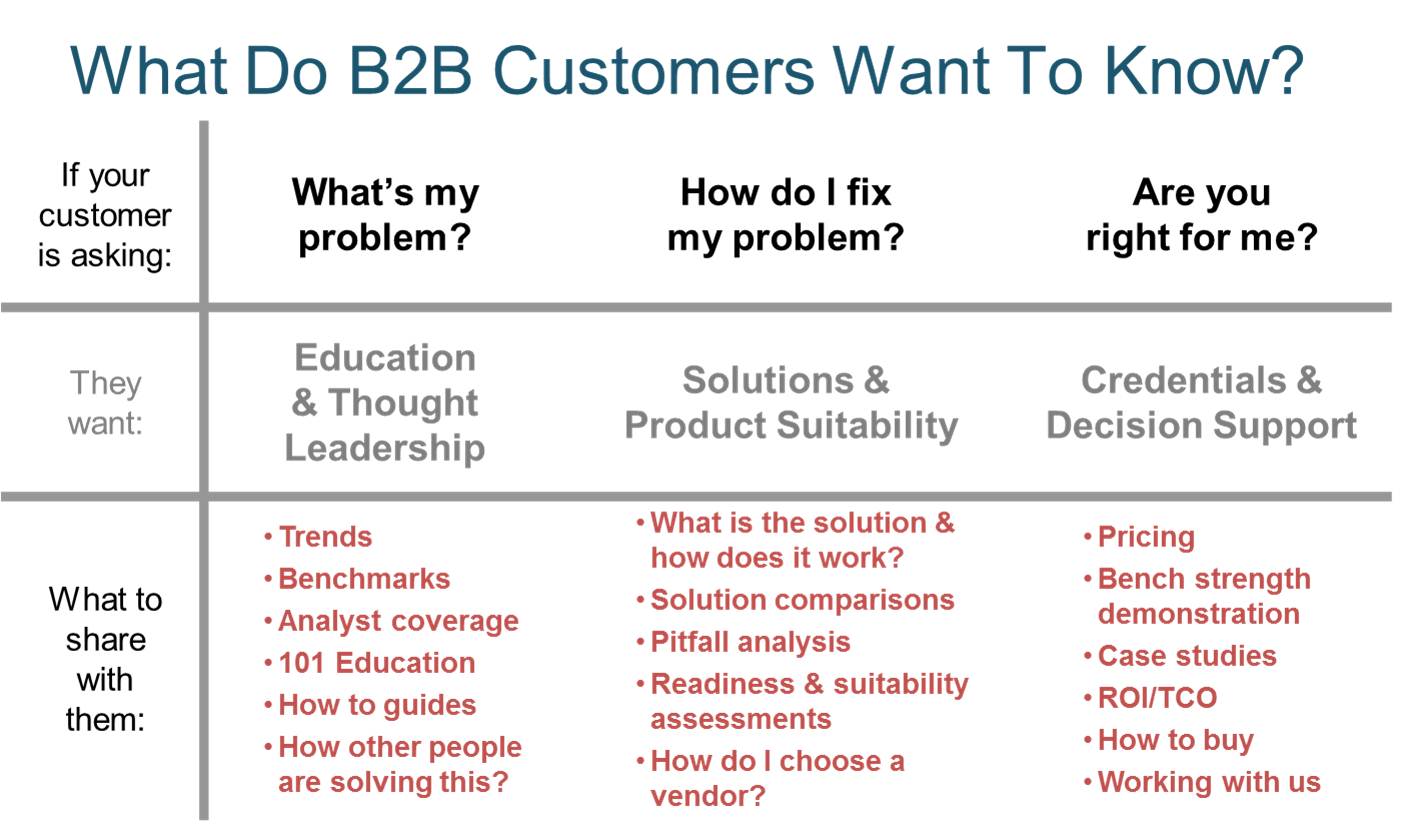|
Marketing
Marketing is the process of exploring, creating, and delivering value to meet the needs of a target market in terms of goods and services; potentially including selection of a target audience; selection of certain attributes or themes to emphasize in advertising; operation of advertising campaigns; attendance at trade shows and public events; design of products and packaging attractive to buyers; defining the terms of sale, such as price, discounts, warranty, and return policy; product placement in media or with people believed to influence the buying habits of others; agreements with retailers, wholesale distributors, or resellers; and attempts to create awareness of, loyalty to, and positive feelings about a brand. Marketing is typically done by the seller, typically a retailer or manufacturer. Sometimes tasks are contracted to a dedicated marketing firm or advertising agency. More rarely, a trade association or government agency (such as the Agricultural Marketing ... [...More Info...] [...Related Items...] OR: [Wikipedia] [Google] [Baidu] |
Marketing Research
Marketing research is the systematic gathering, recording, and analysis of qualitative and quantitative data about issues relating to marketing products and services. The goal is to identify and assess how changing elements of the marketing mix impacts customer behavior. This involves specifying the data required to address these issues, then designing the method for collecting information, managing and implementing the data collection process. After analyzing the data collected, these results and findings, including their implications, are forwarded to those empowered to act on them. Market research, marketing research, and marketing are a sequence of business activities; sometimes these are handled informally. The field of ''marketing research'' is much older than that of ''market research''. Although both involve consumers, ''Marketing'' research is concerned specifically about marketing processes, such as advertising effectiveness and salesforce effectiveness, while ''mark ... [...More Info...] [...Related Items...] OR: [Wikipedia] [Google] [Baidu] |
Philip Kotler
Philip Kotler (born May 27, 1931) is an American marketing author, consultant, and professor emeritus; the S. C. Johnson & Son Distinguished Professor of International Marketing at the Kellogg School of Management at Northwestern University (1962–2018). He is known for popularizing the definition of marketing mix. He is the author of over 80 books, including ''Marketing Management'', ''Principles of Marketing'', ''Kotler on Marketing'', ''Marketing Insights from A to Z'', ''Marketing 4.0'', ''Marketing Places'', ''Marketing of Nations'', ''Chaotics, Market Your Way to Growth, Winning Global Markets, Strategic Marketing for Health Care Organizations, Social Marketing, Social Media Marketing, My Adventures in Marketing, Up and Out of Poverty,'' and ''Winning at Innovation.'' Kotler describes strategic marketing as serving as "the link between society's needs and its pattern of industrial response." Kotler helped create the field of social marketing that focuses on helping in ... [...More Info...] [...Related Items...] OR: [Wikipedia] [Google] [Baidu] |
Target Market
A target market, also known as serviceable obtainable market (SOM), is a group of customers within a business's serviceable available market at which a business aims its marketing efforts and resources. A target market is a subset of the total market for a product or service. The target market typically consists of consumers who exhibit similar characteristics (such as age, location, income or lifestyle) and are considered most likely to buy a business's market offerings or are likely to be the most profitable segments for the business to service by OCHOM Once the target market(s) have been identified, the business will normally tailor the marketing mix (4 Ps) with the needs and expectations of the target in mind. This may involve carrying out additional consumer research in order to gain deep insights into the typical consumer's motivations, purchasing habits and media usage patterns. The choice of a suitable target market is one of the final steps in the market segmentation ... [...More Info...] [...Related Items...] OR: [Wikipedia] [Google] [Baidu] |
Chartered Institute Of Marketing
The Chartered Institute of Marketing (CIM) was founded in 1911. It has over 30,000 members, including more than 3,000 registered Chartered Marketers. CIM offers 130 study centres in 36 countries, and exam centres in 132 countries. In 1952 Prince Philip, Duke of Edinburgh, became the institute's patron, taking over from King George VI who was appointed in 1937 as CIM's first royal patron. In 2019 Charles, Prince of Wales, became the new patron of CIM. The first Code of Practice was introduced in 1973, and in 1989, the institute was awarded a royal charter. CIM offers training courses, and professional qualifications, from foundation to postgraduate or master's degree level ( EQF Level 7). In 1992, the European Union declared CIM's flagship qualification as the "preferred professional marketing qualification through member states". Membership The two types of membership offered by CIM consist of the following grades: Introductory Membership: *Affiliate Studying *Affiliate ... [...More Info...] [...Related Items...] OR: [Wikipedia] [Google] [Baidu] |
Advertising Campaign
An advertising campaign is a series of advertisement messages that share a single idea and theme which make up an integrated marketing communication (IMC). An IMC is a platform in which a group of people can group their ideas, beliefs, and concepts into one large media base. Advertising campaigns utilize diverse media channels over a particular time frame and target identified audiences. The campaign theme is the central message that will be received in the promotional activities and is the prime focus of the advertising campaign, as it sets the motif for the series of individual advertisements and other marketing communications that will be used. The campaign themes are usually produced with the objective of being used for a significant period but many of them are temporal due to factors like being not effective or market conditions, competition and marketing mix. Advertising campaigns are built to accomplish a particular objective or a set of objectives. Such objectives usua ... [...More Info...] [...Related Items...] OR: [Wikipedia] [Google] [Baidu] |
American Marketing Association
The American Marketing Association (AMA) is a professional association for marketing professionals with 30,000 members as of 2012. It has 76 professional chapters and 250 collegiate chapters across the United States. The AMA was formed in from the merger of two predecessor organizations, the National Association of Marketing Teachers and the American Marketing Society. It also publishes a number of handbooks and research monographs. The AMA publishes the '' Journal of Marketing'', '' Journal of Marketing Research'', ''Journal of Public Policy and Marketing'', ''Journal of International Marketing'', and ''Marketing News''. It sponsors the collegiate honor society Alpha Mu Alpha. Organization The American Marketing Association has a board of directors that are elected annually by its members and a set of councils that are appointed. The headquarters is located in Chicago. History At a 1915 convention of the Associated Advertising Clubs of the World, a group of advertising teachers ... [...More Info...] [...Related Items...] OR: [Wikipedia] [Google] [Baidu] |
Brand Awareness
Brand awareness is the extent to which customers are able to recall or recognize a brand under different conditions. Brand awareness is one of two dimensions from brand knowledge, an associative network memory model. Brand awareness is a key consideration in Consumer Behaviour, consumer behavior, advertising management, and brand management. The consumer's ability to recognize or recall a brand is central to purchasing decision-making. Purchasing cannot proceed unless a consumer is first aware of a product category and a brand within that category. Awareness does not necessarily mean that the consumer must be able to recall a specific brand name, but they must be able to recall enough distinguishing features for purchasing to proceed. Creating brand awareness is the main step in advertising a new product or bringing back the older brand in light. Brand awareness consists of two components: brand recall and brand recognition. Several studies have shown that these two components oper ... [...More Info...] [...Related Items...] OR: [Wikipedia] [Google] [Baidu] |
B2B Marketing
Business marketing is a marketing practice of individuals or organizations (including commercial businesses, governments and institutions). It allows them to sell products or services to other companies or organizations that resell them, use them in their products or services or use them to support their works. It is a way to promote business and improve profit too. Business marketing is also known as industrial marketing or business-to-business (B2B) marketing. Business-to-government marketing, while still classified within the B2B discipline due to the sharing of dynamics, does differ slightly. Origins The practice of a purveyor of goods trading with another may be as old as commerce itself. In relation to marketing today, its history is more recent. Michael Morris, Leyland Pitt, and Earl Dwight Honeycutt say that for several years business marketing took "a back seat" to consumer marketing. This entailed providers of goods or services selling directly to households throu ... [...More Info...] [...Related Items...] OR: [Wikipedia] [Google] [Baidu] |
Brand Loyalty
In marketing, brand loyalty describes a consumer's positive feelings towards a brand, and their dedication to purchasing the brand's products and/or services repeatedly, regardless of deficiencies, a competitor's actions, or changes in the environment. It can also be demonstrated with other behaviors such as positive word-of-mouth advocacy. Corporate brand loyalty is where an individual buys products from the same manufacturer repeatedly and without wavering, rather than from other suppliers. Loyalty implies dedication and should not be confused with habit with its less-than-emotional engagement and commitment. Businesses whose financial and ethical values (for example, ESG responsibilities) rest in large part on their brand loyalty are said to use the loyalty business model. Marketing Brand loyalty, in marketing, consists of a consumer's commitment to repurchase or continue to use the brand. Consumers can demonstrate brand loyalty by repeatedly buying a product, service, o ... [...More Info...] [...Related Items...] OR: [Wikipedia] [Google] [Baidu] |
Market Research
Market research is an organized effort to gather information about target markets and customers: know about them, starting with who they are. It is an important component of business strategy and a major factor in maintaining competitiveness. Market research helps to identify and analyze the needs of the market, the market size and the competition. Its techniques encompass both qualitative techniques such as focus groups, in-depth interviews, and ethnography, as well as quantitative techniques such as customer surveys, and analysis of secondary data. It includes social and opinion research, and is the systematic gathering and interpretation of information about individuals or organizations using statistical and analytical methods and techniques of the applied social sciences to gain insight or support decision making. Market research, marketing research, and marketing are a sequence of business activities; sometimes these are handled informally. The field of ''marketing rese ... [...More Info...] [...Related Items...] OR: [Wikipedia] [Google] [Baidu] |
Product Placement
Product placement, also known as embedded marketing, is a marketing technique where references to specific brands or products are incorporated into another work, such as a film or television program, with specific promotional intent. Much of this is done by loaning products, especially when expensive items, such as vehicles, are involved. In 2021, the agreements between brand owners and films and television programs were worth more than US$20 billion. While references to brands (real or fictional) may be voluntarily incorporated into works to maintain a feeling of realism or be a subject of commentary, product placement is the deliberate incorporation of references to a brand or product in exchange for compensation. Product placements may range from unobtrusive appearances within an environment, to prominent integration and acknowledgement of the product within the work. Common categories of products used for placements include automobiles and consumer electronics. Works produ ... [...More Info...] [...Related Items...] OR: [Wikipedia] [Google] [Baidu] |
Relationship Marketing
Relationship marketing is a form of marketing developed from direct response marketing campaigns that emphasizes customer retention and satisfaction rather than sales transactions. It differentiates from other forms of marketing in that it recognises the long-term value of customer relationships and extends communication beyond intrusive advertising and sales promotional messages. With the growth of the Internet and mobile platforms, relationship marketing has continued to evolve as technology opens more collaborative and social communication channels such as tools for managing relationships with customers that go beyond demographics and customer service data collection. Relationship marketing extends to include inbound marketing, a combination of search optimization and strategic content, public relations, social media and application development. Development Relationship marketing refers to an arrangement where both the buyer and seller have an interest in a more satisfyi ... [...More Info...] [...Related Items...] OR: [Wikipedia] [Google] [Baidu] |




.jpg)


